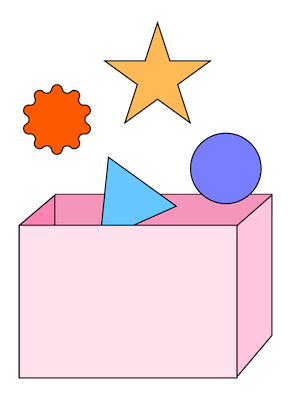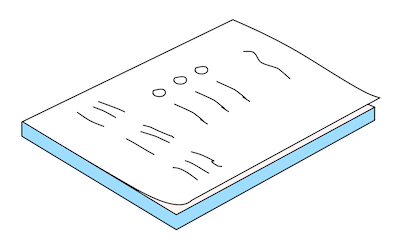10 Mental Models to Master Productivity
Mental models are a powerful tool for mastering productivity. This article explains how to use them and helps you to build a library of mental models that you can use to improve productivity.

Knowing yourself is the beginning of all wisdom. – Aristotle
Your mental model is a mindset that determines your choices.
It is a framework that makes an impact on how you:
- make decisions
- interpret things
- perceive the world around you.
Originally defined as mental images of the world that contain selected concepts and relationships, mental models were widely studied in the 1980s.
Why are mental models important
Our daily lives are replete with mental models and we use many of them subconsciously.
Mental models operate as an algorithm for minimizing negative consequences when we make choices.
- Mental models help reduce complexity
- Mental models save mental space.
People use mental models to explain how something works in the real world.
If the representation of the surrounding world in our mind is accurate, we make optimal decisions. Metaphorically speaking, mental models are an ideal tool for separating the wheat from the chaff.
Making an opportunity cost assessment, listing pros and cons, or grabbing the promoted product are examples of mental models 'in work'.
You have probably heard about them before. But do you know how to apply them?
Below, we list the top 10 mental models that are worthy of your attention if you want to master productivity.
Mental model #1️⃣ Removal of anchors
Anchors are the initial information that we tend to rely on too heavily. It happens when you turn an assumed question into an answer. This way, you self-limit the scenarios you can act upon.
For example, future sales of products are predicted on the basis of using only past sales data. When the market moves quickly, inadequate prognostication is inevitable.
Instead, it is advisable you call the anchoring assumptions into question. Recognizing anchors in the process of decision-making changes the scripts in your thinking and influences outcomes positively.
Why it is useful: to prevent overthinking; to avoid decision paralysis.
When to apply: in situations that require sharp forecasting skills and in situations that make you feel trapped.
Mental model #2️⃣ Backward chaining
Backward chaining implies stating a goal and working backward (recreating a chain of steps) from it.
It helps declutter your thinking. It also moves you in direction of success and away from the wrong answers.
Taking a backward vision perspective lets you see what steps are pre-defined for arrival at the endpoint and opens ways of realizing your goals that may complement each other in unexpected ways.
Why it is useful: providing a guarantee of success and a guide to reaching a goal, gives you a sense of accomplishment.
When to apply: when you need to practice new skills and integrate them into the performance of complex projects.
Mental model #3️⃣ Pareto principle
Pareto Principle, also known as Pareto Efficiency, or the 80/20 rule, states that most results do not come from an equal distribution.
It means that the more focused you can be on that 20% that generates successful outcomes, the more accomplished you'll be. It can be:
- working at the most productive time
- paying special attention to your repeat buyers
- investing in the most profitable activities, etc.
Why it is useful: this model allows you to identify the areas for improvement that are most promising and, thus, valuable, against those that are mostly trivial or not contributing to success.
When to apply: at the planning stage; when you are allocating time; when you need to set your priorities, and whenever you want to enhance your chances of success.
Mental model #4️⃣ Hard choice
When you are facing a situation that requires a hard choice to make, you need to keep in mind only one factor. It is a type of decision you are to make. There are two types: reversible decisions and irreversible decisions.
The first can be canceled or altered, and, thus, they allow for a wider error margin. It also means that you do not have to take much time while making them.
Unlike the first type, irreversible decisions (selling a business, cutting your hair, etc.) cannot be 'undone'.
Irreversible choices feel more impactful, which means you need to invest more time and consideration in the adoption of decisions.
Why it is useful: differentiation of choices unburdens the mind and accelerates the velocity of decision-making.
When to apply: for dilemmas; for prevention of choice overload.
Mental model #5️⃣ Root cause
What ignites the sequence of events is known as a root cause. Identifying it results in:
- obtaining data for precision in forecasting similar scenarios
- uncovering the trigger of the issues
- performing a deeper analysis of actions and projects.
To operate on this mental model, there are lots of techniques. One of the most popular is 5 whys introduced by Sakichi Toyoda in the 1930s. The technique breaks down to asking why-question linking it to the previous answer till the extraction of the root cause of the situation.
Why it is useful: aside from developing yourself into a more productive person, seeking root causes promises a high level of clarity in communication and diminishes time loss to the minimum.
When to apply: for problem-solving; for analysis of mistakes; for building relevant solutions.
Mental model #6️⃣ BHAG
BHAGs focus on ambitious long-term goals (hence the name Big Hairy Audacious Goal) that drive people and businesses toward accomplishment.
For example, Musk and his pioneering idea of exploring Mars. Another example is Steve Jobs who introduced the innovative tech that changed the idea of the phone and multiple domains around communication. Microsoft stated the delivery of a personal computer to every desk as its mission.
It took time to produce results but in most cases they were game-changing, to say the least. So, if you feel inspired to create a great plan for yourself, do it.
Why it is useful: the revelation of who you are through long-term goals will set the course of your actions and will allow experience work and life profoundly.
When to apply: for setting long-term goals; for maintaining motivation.
Mental model #7️⃣Activation energy
This is a model based on a chemistry fact that states: "It takes a lot of activation energy to initiate an impactful reaction." To prevent a lack of activation energy we require when starting a project or performing a challenging task, there are two steps we can consider:
- everything seems easier if it is a habit
- incentives are one of the best motivational boosters.
Thus, the greatest productivity improvement starts before the actual work when we stack healthy habits. Among the most important for balancing work and life, there are:
- focus training
- self-care.
Why it is useful: to complete a task or a project, you must know how much time and effort you need to input into it. Leveraging your activation energy through habit-stacking and rewarding yourself maintains motivation and helps with deep work.
When to apply: for focused work; for productivity boost; for time optimization.
Mental model #8️⃣ Opportunity costs
In the selection of activities we engage in, we always face the necessity to regard limitations of time and resources.
It means we have to choose between alternatives and refuse the potential benefits of the 'unchosen' scenario. For example, if you choose to invest time in work rather than study, the second choice is the opportunity cost.
Why it is useful: by becoming aware of the costs of choices, you will be able to allocate and consume your time with higher efficiency. It allows acquiring a deep insight into your work to maintain work life balance more effectively.
When to apply: for avoiding procrastination; for setting priorities; for task management.
Mental model #9️⃣ Compound effect
The idea is that small, intelligent decisions can yield huge rewards. For habits to form, they must be practiced continuously.
As many examples illustrate, accomplishments are often measured over months rather than days, and when you zoom out, the benefits of steady and consistent work become evident.
Once we started we can fail but it is only to show us that we are still at the stage of initiation, which means we need to be ready to restart and integrate the knowledge and experience into our actions. When fine-tuned, they will bring a better result.
The compound effect model shifts focus from painstakingly monitoring your progress to simply keeping your goals in sight for sustainable movement.
Why it is useful: it is a working model that advances the idea of motivation and resilience.
When to apply: for self-encouragement; in building strategies.
Mental model #🔟Leverage
Tools, devices, and systems can work as leverage that considerably increases the speed of your work.
If you are banking on this model, you can start with automated time management solutions that help create optimized workflows and set healthy boundaries on work.
Side note: It is a stated fact that consistent and productive work is possible when we alternate between focused work and rest.
To enter the state of rest and recharge, your brain also needs energy so you should not ignore developing such a skill as 'unfocusing' – it can be reached through applying meditation apps, a short nap, building a healthy sleep routine, and positive daydreams.
In the process, you are recalibrating your plans as you learn more about your progress.
Why it is useful: toolkits catering to your professional needs help build an environment where you are able to foster creativity.
When to apply: for task and project management; for overcoming time constraints; for allocating resources with efficiency.
How to apply mental models🔑

- Surface the mental models you use and see if the ones we listed above are in your arsenal
- Test new models
- Improve the internal image of the world you hold.
Remember that mental models change according to your experience and beliefs.
Concluding Thought💡

There is a lot of proof of how mental models benefit your productivity. In particular, they help:
- reduce distractions
- act
- prototype more actively
- create clear objectives
- develop a routine
- break complex things into chunks/stages/phases
- minimize the risks
- stay flexible.
By reflecting on these mental models, you are investing in yourself.
In this way, you take control of the goals you strive for and, most importantly, get a deeper vision of meaningfulness, which gives you a boost of motivation and confidence in decision-making.
With confidence in your decisions, you feel more productive and secure amid uncertainty or noise.
Ready to put these mental models into action? Take our quick Productivity Questionnaire and discover insights to boost your efficiency! 🙌
